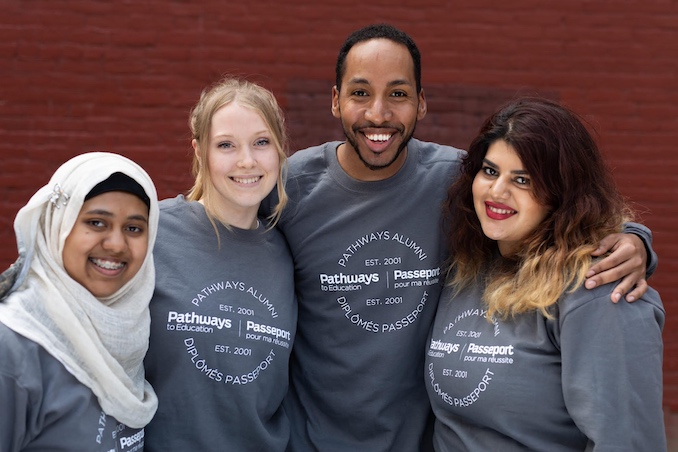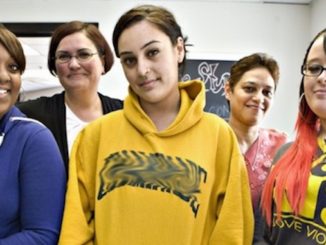Pathways to Education aims to dramatically decrease high school drop out rates across Canada. In low-income neighbourhoods, the high school drop out rate can reach as high as 50%. This is way too high and the community leaders at Pathways to Education have decided to take action.
We recently spoke with Maddy, a Pathways to Education alumni who is now a Member of the Pathways Alumni Advisory Committee and the Digital Media Assistant at Pathways to Education Canada.

Describe your charity/non-profit in a few sentences.
Pathways to Education is a national charitable organization that works in low-income communities across Canada to increase high school graduation rates. By providing students facing barriers with academic, financial, social, one-on-one support, Pathways to Education is working to break the cycle of poverty through education. Founded in 2001, the organization has supported more than 13,000 youth living across the country.
What problem does it aim to solve?
Young people living in low-income communities are less likely to earn a high school diploma. Poverty creates immediate challenges for students by limiting their access to food, transportation, and school supplies—reducing their chances of reaching their potential. Each student in the Pathways to Education Program receives valuable supports like tutoring and mentoring, as well as earning a scholarship for post-secondary education and training. These opportunities allow students to not only overcome the barriers they are facing, but also to see a positive future for themselves and gain the experience needed to make this a reality.
When did you start/join it?
I was a student in the Pathways to Education Program from 2010-2014 and have been actively involved in the Pathways Alumni Network since my high school graduation.
What made you want to get involved?
While the scholarship and academic support were my primary motivations for enrolling in the Pathways to Education Program, the reason I remained involved was the supportive relationships I formed with the staff. I continue to be involved as a Pathways to Education alum because I want to give back to the organization that opened so many doors for me and thousands of my peers.
What was the situation like when you started?
I was part of the first cohort of students supported by the Pathways Program in Kingston. During high school, I was under the impression that Pathways to Education was a local organization. Since then, I have learned that Pathways to Education is a national organization serving youth from low-income communities all across the country, where the average high school dropout rates often range from 30–50%.

How has it changed since?
Pathways to Education is transforming communities and the numbers speak for themselves. Every Pathways to Education Program location has successfully increased high school graduation rates by up to an average of 85%, and 71% of Pathways graduates transition to post-secondary education or training. The Pathways to Education Program is now delivered in 20 communities across the country and has been proven to generate a $24 social return on investment for every dollar invested into the organization.
What more needs to be done?
There are still thousands of young people living in poverty and, as a result, there are more than 300,000 students across the country at risk of leaving high school before their graduation. This issue impacts us all. Students who graduate from high school are more likely to have better health outcomes and be civically engaged and are less likely to be dependent on social assistance. If Canada increased its high school graduation rate by just 1%, the economy could save an estimated $7.7 billion annually. These numbers show that increasing graduation rates is the key to a prosperous future for Canada—Pathways to Education is a necessary part of the equation needed to make that prosperity a reality.
How can our readers help?
Pathways to Education has proven that they are successfully breaking the cycle of poverty by supporting youth to overcome the barriers they are facing and graduate from high school. But they need more support in order to reach the 300,000+ young people across the country who are currently at risk of leaving high school early. I encourage everyone to visit BuildPathways.ca to learn more about the work that Pathways to Education is doing, encourage others to do the same, and consider making a donation to help students across the country realize their potential.
Where can we follow you?
You can find Pathways to Education on Facebook, Twitter, LinkedIn, and Instagram to learn more about the work they are doing and hear success stories from Pathways alumni.




